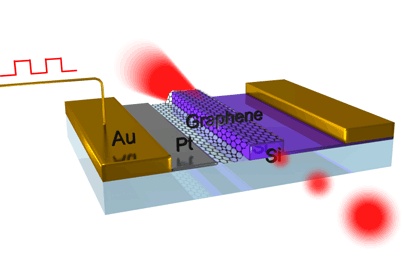Graphene-based modulator promises ultra-fast comms

Researchers at the University of California, Berkeley, have created a graphene-based optical modulator that they think could lead to digital communications up to 10 times faster than is possible with currently-deployed technology.
Graphene is a one-atom thick layer of crystallised carbon that many hope will overcome the limitations of silicon and lead to viable quantum computing. On Sunday, the UC Berkeley scientists announced their graphene-based modulator, claiming it could "soon allow consumers to stream full-length, high-definition, 3D movies onto a smartphone in a matter of seconds".

"This is the world's smallest optical modulator, and the modulator in data communications is the heart of speed control," UC Berkeley engineering professor Xiang Zhang said in a statement. "Graphene enables us to make modulators that are incredibly compact and that potentially perform at speeds up to ten times faster than current technology allows. This new technology will significantly enhance our capabilities in ultra-fast optical communication and computing."
As shown in the illustration above, the modulator uses a layer of graphene (in black) on top of a silicon waveguide (purple), which guides light. Electric signals sent through gold and platinum electrodes change the amount of photons absorbed by the graphene, the researchers said.
Assistant professor of physics and head of the Ultrafast Nano-Optics Group at UC Berkeley, Feng Wang, said in the statement that graphene-based modulators could "lead to unconventional applications due to graphene's flexibility and ease in integration with different kinds of materials".
"Graphene can also be used to modulate new frequency ranges, such as mid-infrared light, that are widely used in molecular sensing," Wang said. Ming Liu, co-lead author of the study published in the 8 May issue of Nature, said so little graphene was required for the modulators that "the graphite in a pencil can provide enough graphene to fabricate one billion optical modulators".